While rebuilding the Baltic Fleet was uppermost in the minds of Russian naval planners in the aftermath of their disastrous war with Japan, and the first Russian dreadnoughts were built there, the growth of the Turkish navy in the Black Sea lead to increasing popular pressure for dreadnoughts on Russia's southern flank. Reports, subsequently proved to be false, of Turkish dreadnought purchases from British yards caused the Duma to order a trio of ships from the yards in the Crimea.
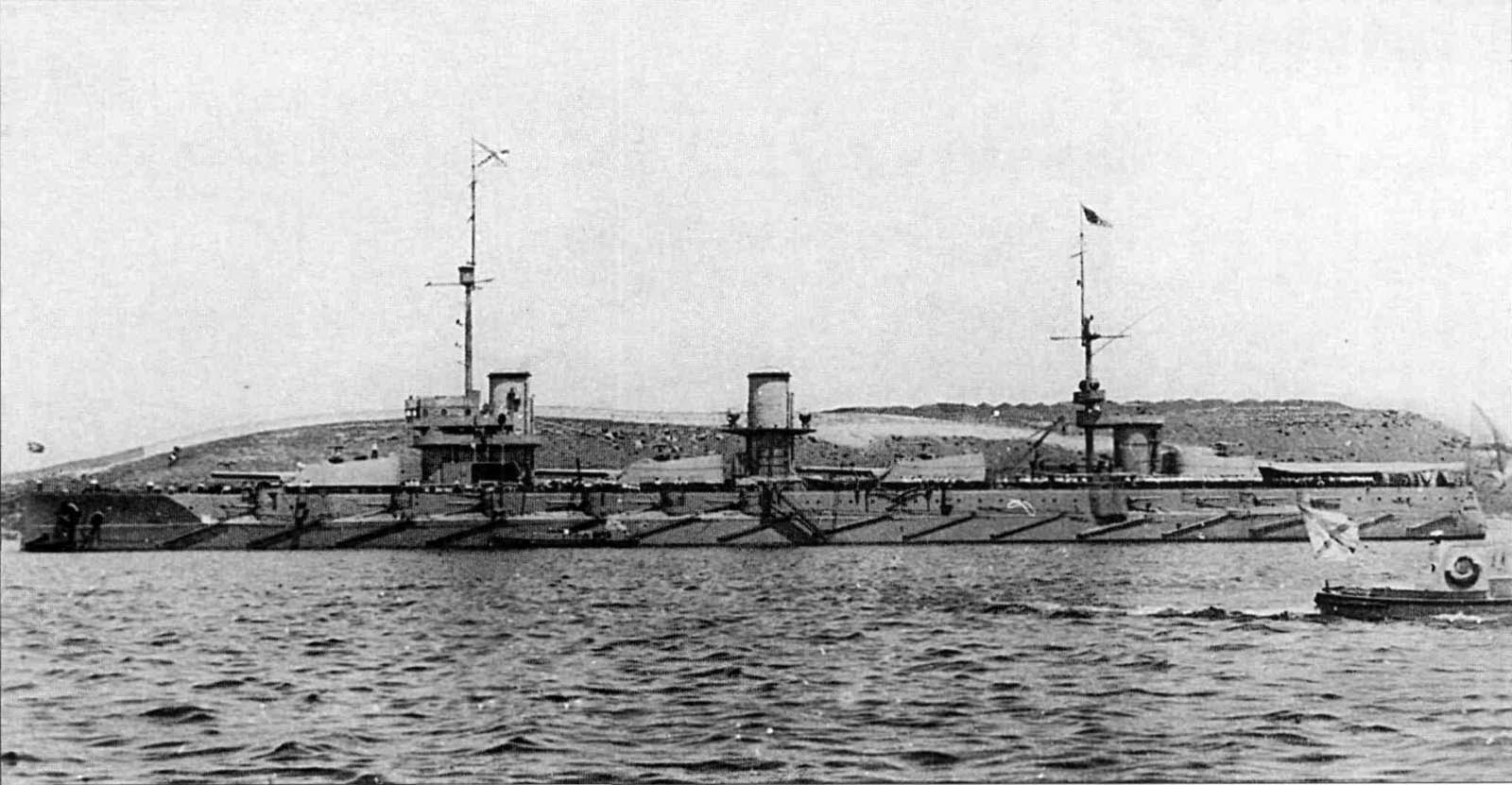
Imperatritsa Mariia
There was the usual array of design proposals, including duplicating the Gangut design in the interests of build time, using diesel propulsion, and fitting the ships with 14" guns to counter the 13.5" weapons expected to be used on the Turkish ships.1 Ultimately, the design selected was similar to Gangut, with the same turret arrangement, 130mm secondary guns concentrated forward, and a speed of 21 kts instead of the 23 of the previous class. This allowed them to be more compact, with thicker armor: 10.3" of belt as opposed to 8.9" on their predecessors.
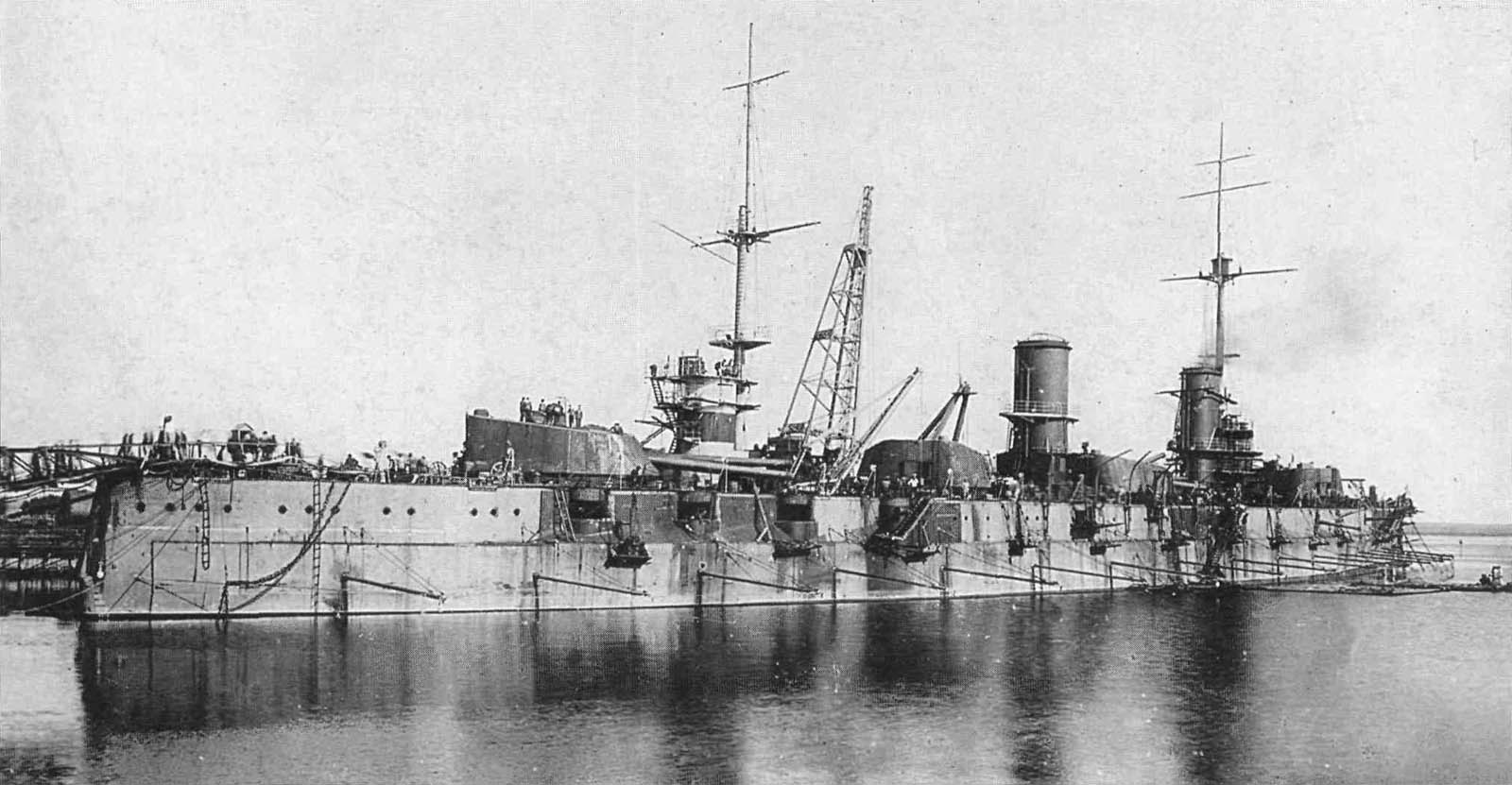
Imperatritsa Ekaterina Velikaia
Concern about the Turkish ships meant that the Russians put special emphasis on construction speed. For once, they got it almost right. Despite some changes to the armor arrangement as a result of large-scale trials, the first ship of the Imperatritsa Mariia class was delayed only three months from her original three-year schedule. The second ship, Imperatritsa Ekaterina Velikaia took only two months more. Her builders, a different yard from the other two ships, decided to compensate for the general tendency of Russian ships to end up overweight by enlarging their vessel. She was 4'10" longer and 2' wider than her half-sisters, but otherwise very similar. The third vessel, Imperator Aleksandr III, took almost five years to complete due to the higher priority awarded to her sisters, and by the time she entered service in 1917, she had been renamed Volia (Liberty).
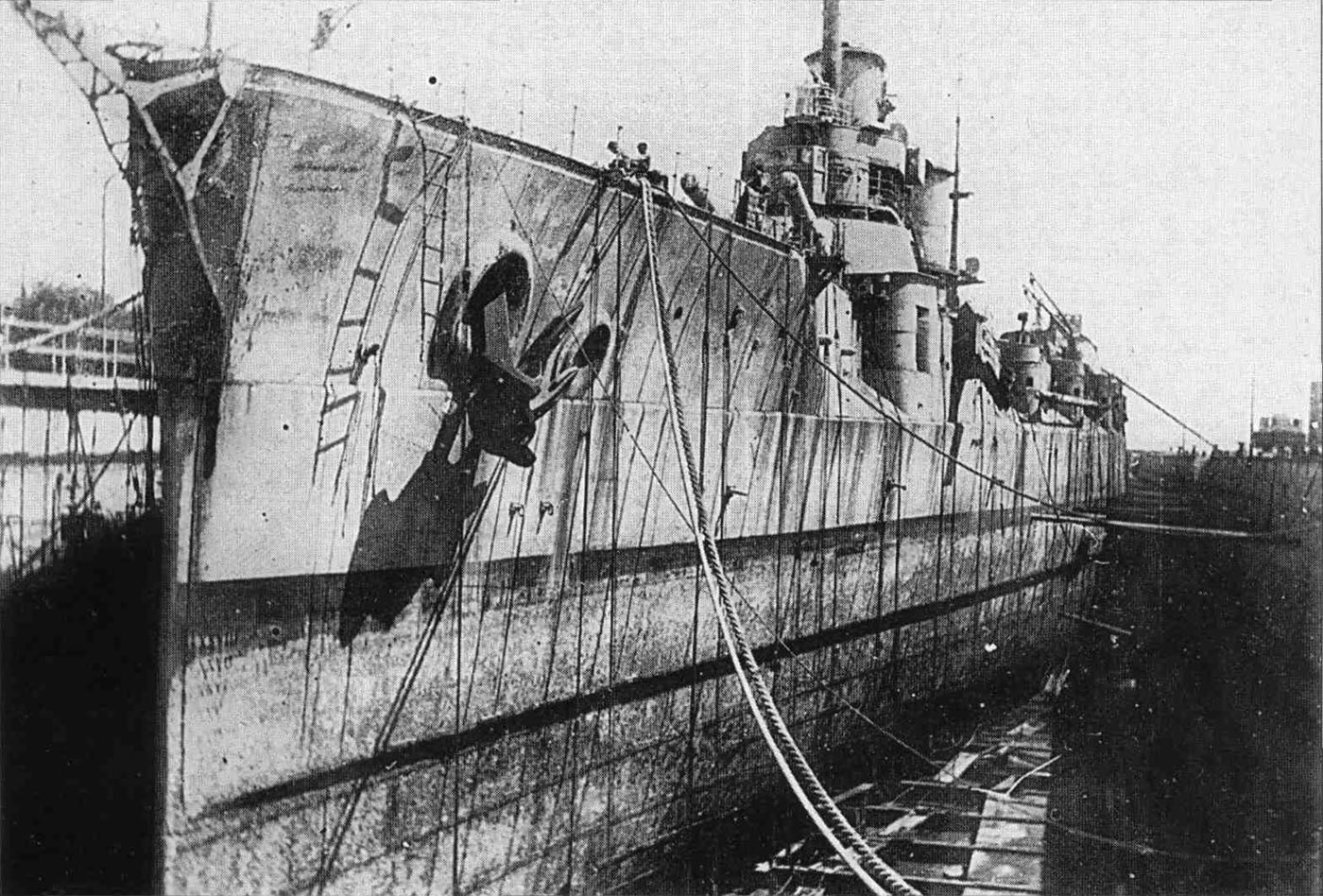
Volia
The three ships were armed with the same 12"/52 guns as the Ganguts, but in new triple turrets. These turrets were designed for a 20-second loading cycle, about two-thirds of the normal interval, because of the Russian reliance on spotting for fire control. The armor scheme, much like that of their predecessors, was intended to protect against the high-explosive shells that had proved so effective in Japanese hands, with a particular emphasis on broadside protection. Against enemies forward or aft of the beam, the magazines of the end turrets could prove dangerously exposed. When completed, Imperatritsa Mariia trimmed badly by the bow, necessitating reductions in ammunition in the forward guns and even the removal of a pair of 130mm secondaries.
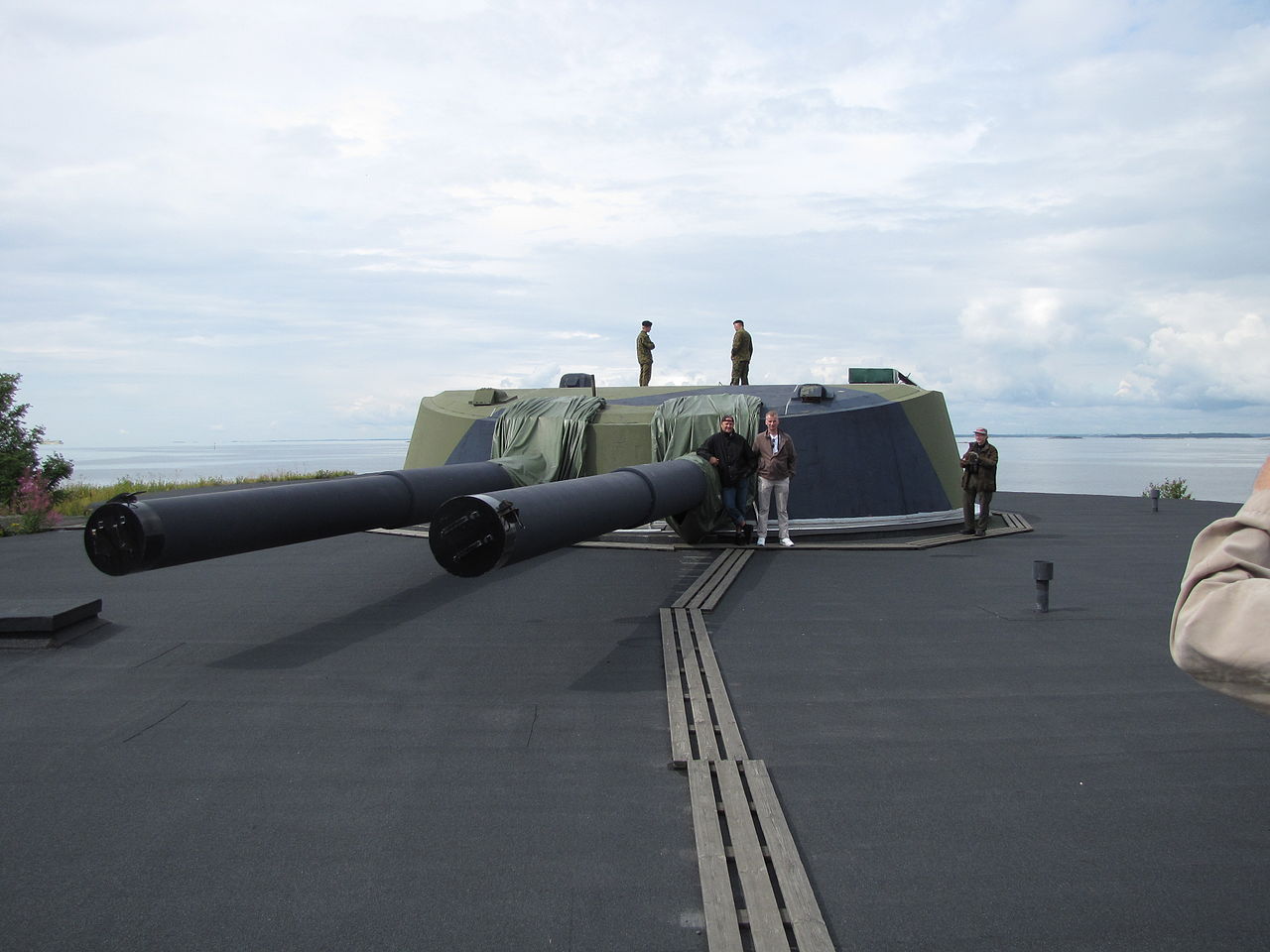
12" guns from Volia installed in Finland
None of these ships had a long career. Imperatritsa Mariia covered some bombardment operations by the Black Sea predreadnoughts before being destroyed on October 20th, 1916 when the forward magazine exploded after a fire broke out there. She was salvaged in the 1920s, but in such poor condition that the Soviet government decided to scrap her. Imperatritsa Ekaterina Velikaia fought a long-range duel with Goeben in January of 1916, but both sides escaped without serious damage. After the February Revolution, she was renamed Svobodnaya Rossiya, Free Russia. In 1918, the Germans demanded she be handed over in accordance with the Treaty of Brest-Litovsk, and the crew decided instead to scuttle her.2 The crew of the Volia, on the other hand, voted to turn over their ship, and she cruised under German control until the British and French seized her after the Armistice. In 1919, she was given to the anti-Bolshevik Whites, and evacuated the Crimea with them the next year. The White fleet made for Bizerte, Tunisia, where Volia was interned. In the late 20s, the French authorities auctioned her off to pay for her docking fees, although she was not broken up until 1936.3
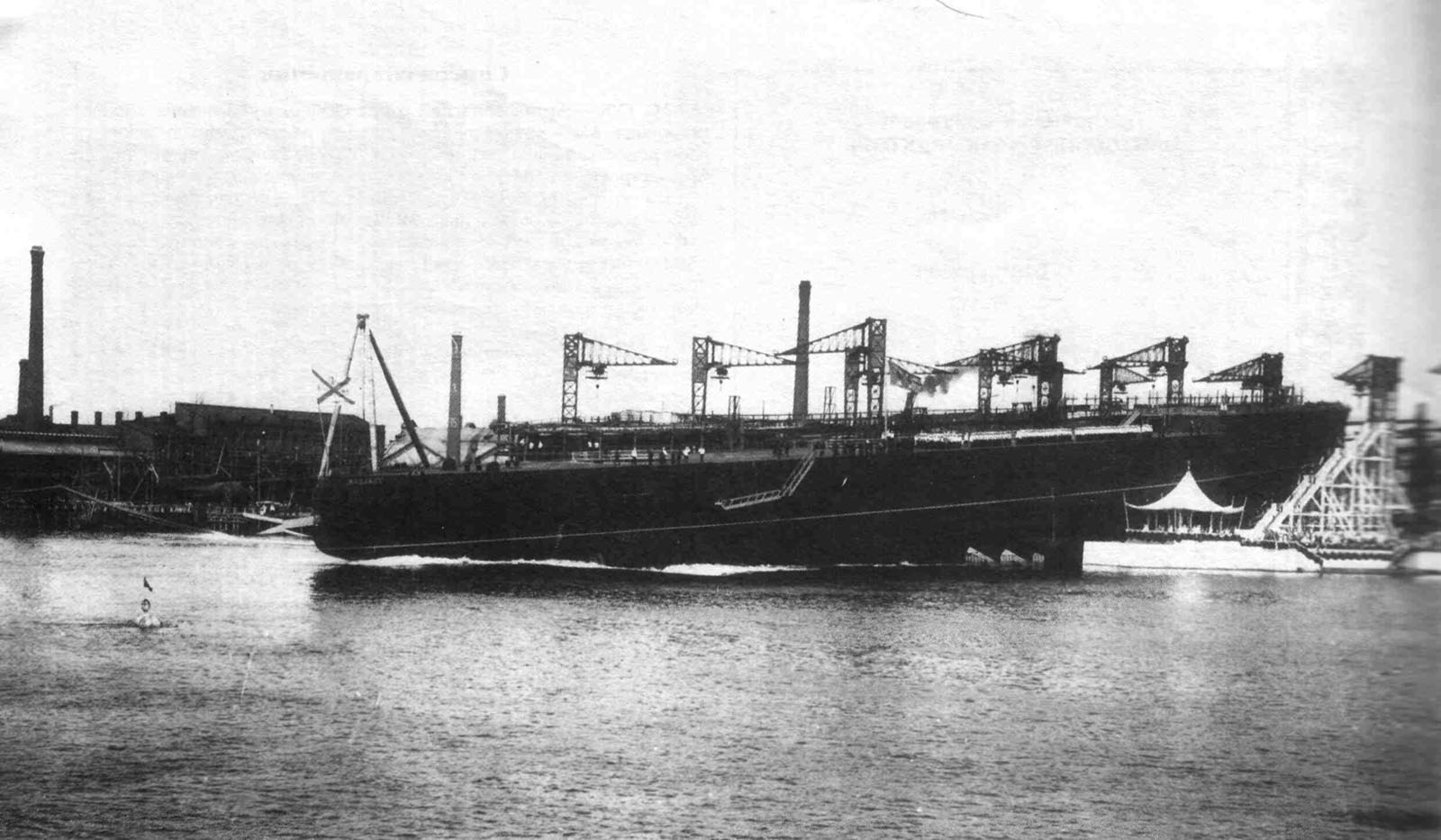
Izmail being launched
Even as battleships were being built in the Black Sea, the eyes of the Russian navy remained firmly focused on the Baltic, and the next class of ships to be built there. Inspired by Togo's tactics at the Battle of Tushima, Russian doctrine considered it important to create a fast squadron capable of concentrating on the head of the enemy's line. This role forced the ships away from their initial conception as armored cruisers and towards a more heavily-armored battlecruiser. To get these ships approved, the Navy promised the Duma that they would stay within budget, which proved a serious problem. The original plan had been for 9 14" guns,4 a speed of 26.5 kts, and a 10" belt. Soon after the initial design competition, it was decided that for fire-control reasons, it would be better to go with four triple 14" turrets in the standard linear configuration. This cost a knot of speed and a half-inch of belt, but these cuts still left the ships woefully over budget. The necessary money was found by raiding other programs, and construction began in early 1913.
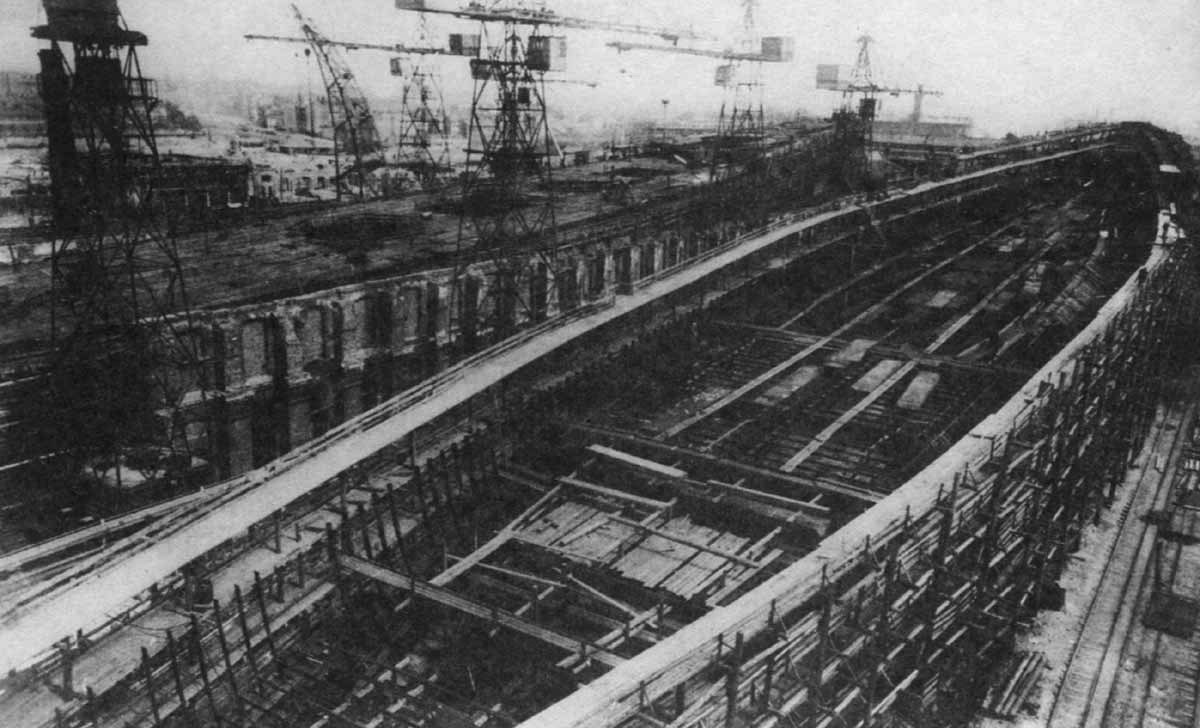
Navarin and Borodino under construction
To keep the ships on budget, changes to the Borodino class were to be kept to a minimum. You can probably guess how well that worked out. The same armor trials that caused tweaks to the Imperatritsa Mariias also necessitated minor changes to their armor, although a more radical redesign of the armor was proposed. It was actually accepted by the Deputy Naval Minister before the Naval Minister returned from the Crimea and countermanded his order. The outbreak of war saw even the ship furthest along less than half complete, and many critical parts ordered from abroad had not been delivered, and in some cases, such as the German ball bearings for the turret foundations, could not be. As a result, the ships were essentially suspended until after the war, even though they had already been launched. When the war finally did end, things in Russia did not return to normal for several more years, and despite various schemes to complete the ships to an updated design, all four were scrapped.
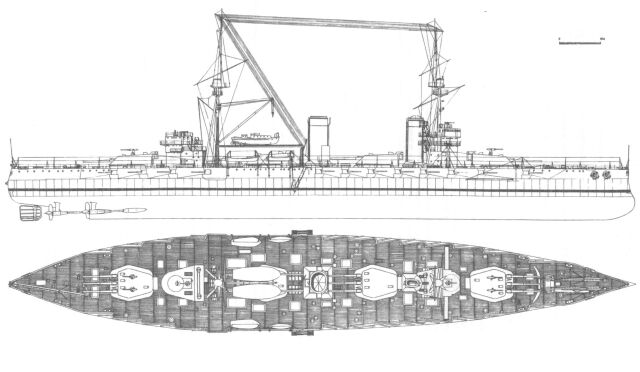
Imperator Nikolai I
In the meantime, the Turkish navy continued to expand, and the Russians decided to buy a fourth dreadnought for the Black Sea Fleet at the end of 1913. While 14" guns were considered, Russian doctrine required 12 guns, which would have meant a much larger ship. The urgency of the requirement ruled this out, and a design based on the Imperatritsa Mariia was selected. Machinery and armament were essentially identical, but the resulting ship, Imperator Nikolai I, was about 20% larger, more heavily armored and with much greater range.5 Industrial limitations meant the belt could only be increased from 10.3" to 10.6", but the longitudinal bulkhead intended to catch splinters was increased from 2" to 3". Improved technology allowed this bulkhead to be cemented, increasing effectiveness by another 40%. The ship was laid down in May 1914, just in time for the outbreak of war. More urgent projects delayed the planned October 1915 launch date by a year, still a fairly impressive performance for a Russian shipyard. Revolutionary unrest reduced construction to a crawl shortly thereafter, and in October 1917, the renamed Demokratiia was suspended. She remained afloat for another decade until the Soviets finally scrapped her.
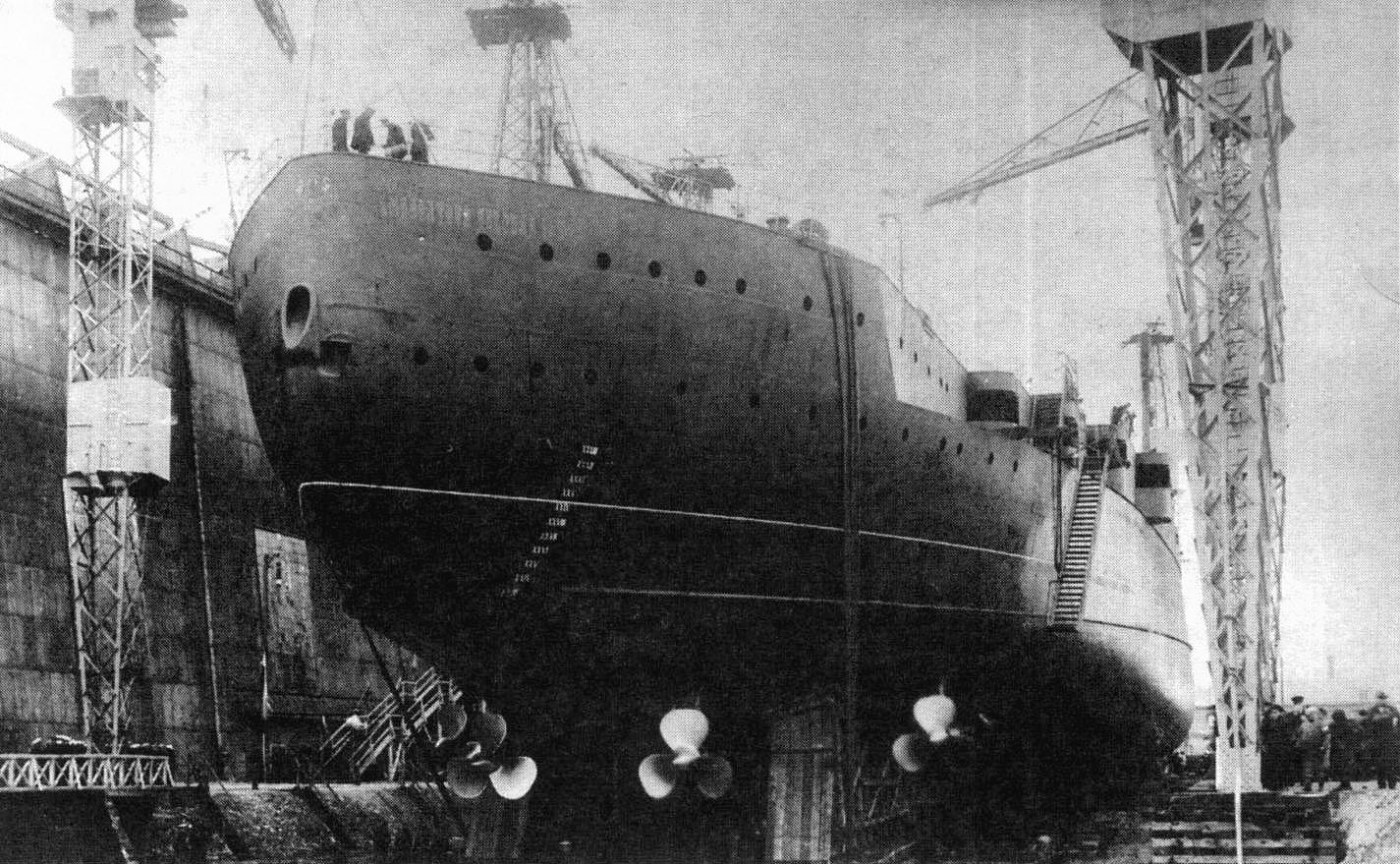
Imperator Nikolai I under construction in 1916
Imperator Nikolai I would be the last battleship laid down for the Tsar. After the disruption caused by the fall of the Romanovs and the later communist takeover, the new Red Navy was a pitiful shadow of its former self. As the country rebuilt, Stalin would eventually attempt to build new battleships. The bizarre tale of those ships is a story for next time.
1 In fact, Turkey had not ordered any ships at the time, but did eventually order one dreadnought, Reşadiye and bought another originally laid down for Brazil. Both ships ended up in British hands after the outbreak of war. ⇑
2 Several years later, the Soviets attempted to salvage guns and ammunition from the ship. To open access and retrieve the shells, they used explosives, with the predictable result that eventually a blast set off a torpedo warhead, which then detonated a magazine. This brought an end to salvage work. ⇑
3 Her guns had an even longer and weirder career. The French stored them, then donated them to the Finns during the Winter War. The war ended before they reached Finland. Four of them were captured by the Germans in Narvik, Norway, and ended up in a battery on the island of Guernsey in the English Channel. The Finns emplaced six of the eight guns they received as coastal artillery, although two of them were handed over to the Soviets after the end of WWII. The Finnish guns remained operational until the 70s, while the pair in Soviet hands lasted into the 90s. Some of the guns are on display in Finland today. ⇑
4 This was in response to the proliferation of 13.5" and 14" guns worldwide. ⇑
5 It appears that the Russians believed there would be a change in status of the Turkish Straits fairly soon, which would allow them to send the ship out of the Black Sea. Today, Russian warships are allowed by treaty to transit the straits, but at the time, this was banned. ⇑

Comments
On the cross section of Imperator Nikolai, there are a lot of lines forming a sort of "L" or reverse "7" shape in the top hamper. I assume these are radio aerials or something of that sort?
More generally, was the pre-Soviet Russian Navy ever actually more than a paper threat to anyone? It seems like the Russians never really got being a naval power, any only really developed a reasonable force projection capability for a few years during the Cold War, between budget/procurement issues, doctrinal failures, and lack of professionalism/institutional knowledge.
You're correct about those lines. McLaughlin doesn't go into much detail on radio fits, but I can't think of what else they'd be.
Re the Russian Navy as a whole, they weren't completely useless. They handled themselves pretty well against the Germans and Turks during WWI. The big issue was that they were at a significant disadvantage against the Japanese due to poor commanders and being way too far from their bases. And the British considered them a threat for years.
"It seems like the Russians never really got being a naval power"
Well Russia never really relied upon marine trade like the UK or US, so the navy was less of a priority than ground forces.
They also have the problem that geography forces them to split their navy into 4 different fleets, each unable to support the other, and 2 of them are bottled up in the Black Sea and the Baltic.
To a degree its understandable that naval power projection was never their strength.
Things were a bit different in the Tsar's day. The Northern Fleet basically didn't exist, and the majority of Russian strength was in the Baltic. The drivers that lead to the Northern Fleet were still there, but I don't have a good explanation for why they weren't acted upon. Might be industrial limitations, or lack of good icebreakers for all I know. The Black Sea was completely cut off, and they didn't have yards in the Pacific, so that fleet operated out of the Baltic.
The rail links to the northern ports didn't exist yet. They were crash built (at tremendous expense) during the first war. After all, in peace time, the value of such rail lines is zero. You can trade just fine, at much lower cost, out of Odessa and Riga.